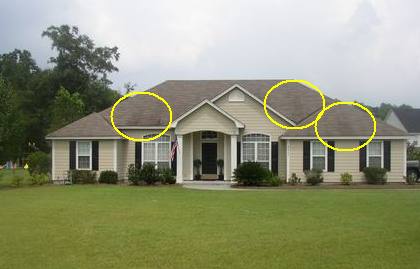|
The first thing to understand about mold is that there it's everywhere - indoors and outdoors. It's in the air and can be found on plants, foods, dry leaves, and other organic materials. It's common to find molds in homes and buildings as molds grow naturally indoors and can enter a home through heating and air conditioning systems, doorways and windows. Mold spores also enter the home on pets, your clothing, shoes, bags and people. When mold spores locate excessive moisture in your home, they will grow. Problem sites include humidifiers, leaky roofs and pipes, overflowing sinks, bath tubs and plant pots, steam from cooking, wet clothes drying indoors, dryers exhausting indoors, or where there has been flooding. Materials chosen to build homes can provide suitable nutrients for mold, helping it to grow. Examples include paper and paper products, cardboard, ceiling tiles, wood, and wood products, dust, paints, wallpaper, insulation materials, drywall, carpet, fabric, and upholstery. |
|
Exposure to mold |
|
For some people, a small exposure to mold spores can trigger an asthma attack or lead to other health problems. For others, symptoms may only occur when exposure levels are much higher. |
|
Should I be concerned about mold in my home? |
|
Yes. If indoor mold is extensive, those in your home can be exposed to very high and persistent airborne mold spores. It is possible to become sensitized to these mold spores and develop allergies or other health concerns, even if one is not normally sensitive to mold. Left unchecked, mold growth can cause structural damage to your home as well as permanent damage to furnishings and carpet. According to the Centers for Disease Control*, "It is not necessary, however, to determine what type of mold you may have. All molds should be treated the same with respect to potential health risks and removal." |
|
Can my home be tested for mold? |
|
Yes. An indoor air sample can be taken as well as an outdoor sample to determine whether the number of spores inside your home is significantly higher. If the indoor level is higher, it could mean that mold is growing inside your home. Reliable air sampling can be expensive, time consuming, and requires special equipment and a qualified technician. If you can see or smell mold, then you should take steps to clean-up the mold. Mold growth is likely to continue unless the source of moisture is removed and the contamination is cleaned-up. CHAPEL HILL REAL ESTATE CARY REAL ESTATE DURHAM REAL ESTATE RALEIGH REAL ESTATE |


Comments (1)Subscribe to CommentsComment